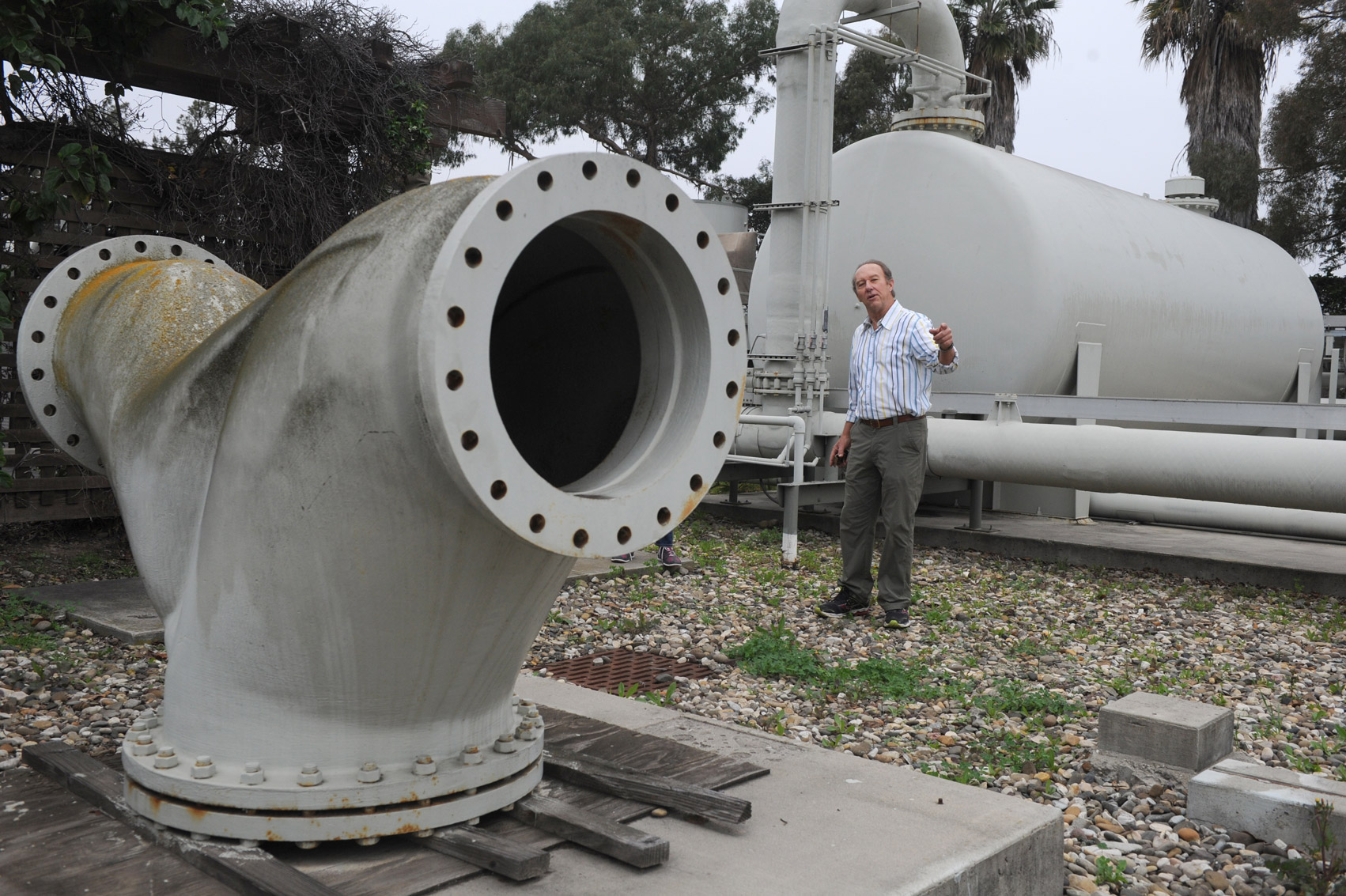City of Santa Barbara Desal Plant Still Not Fully Operational

Although the City of Santa Barbara’s revamped desalination plant started production in May, enough bugs in the system remain four months later to say the plant is not yet officially up and operating. According to city water czar Joshua Haggmark, the plant’s intake pipe has had a leak that he and the contractors recently rectified and resolved. Haggmark reported city water customers hit conservation marks of 45 percent for the month of August. Even though Santa Barbara’s population increased by 5,000 since the last major drought — 1987 to 1992 — he said city customers are using even less water today than they were back then, roughly 9,000 acre-feet a year.
Given the exaggerated sense of optimism the appearance of Lake Cachuma might now engender, that’s probably good. On paper, the South Coast’s main reservoir is now 42 percent full. But as a practical matter in terms of available water supply, it’s closer to 30 percent full. That’s because water agencies downstream from the dam are now emptying the reservoir of up to 16,000 acre-feet of water to ensure groundwater basin recharge for the city of Lompoc and other nearby communities. Another 12,000 acre-feet — known as the “dead pool” — are off-limits as a failsafe way to maintain the functional integrity of the reservoir as a lake.
Haggmark has been quick to stress that Santa Barbara escaped its most intense drought ever thanks to the largesse of just one especially wet rain event. Without additional rains, he’s noted, the past could quickly become prologue. Weather forecasters are now predicting there’s an equal chance this winter will be wet, dry, or normal. Adding a major element of suspense to the equation is the large amount of acreage that burned during this past year’s Whittier Fire on the south slopes feeding into Lake Cachuma. In heavy rains, that untethered soil could easily wash into the reservoir, creating water quality challenges while reducing the dam’s ultimate water storage capacity.
Editor’s Note: This story was updated to reflect that the leaking intake pipe had been fixed.



